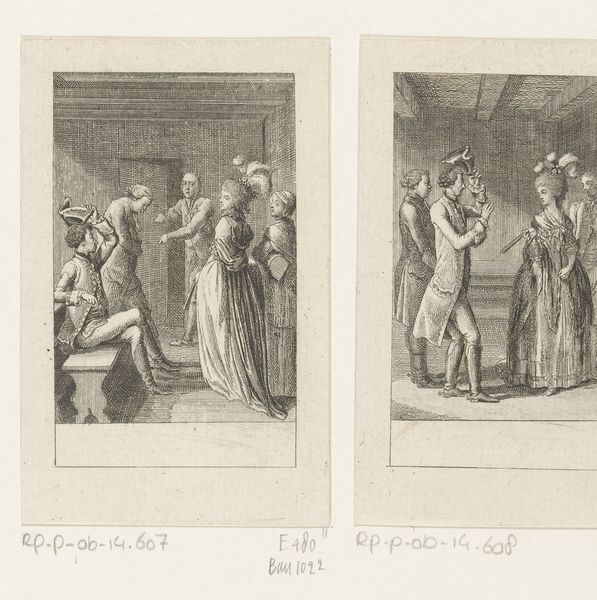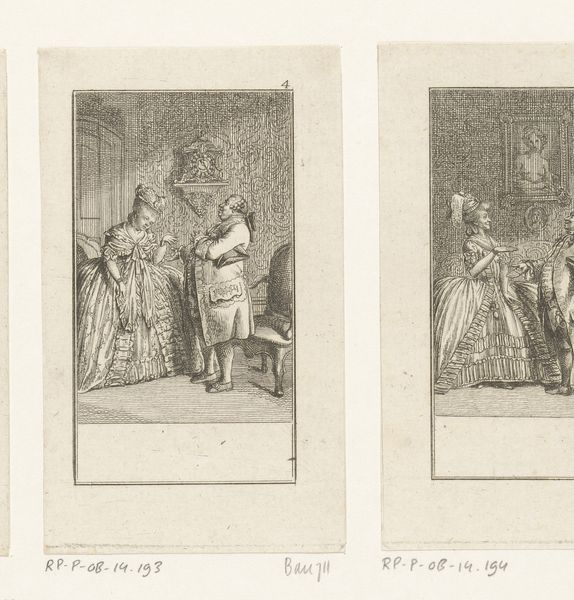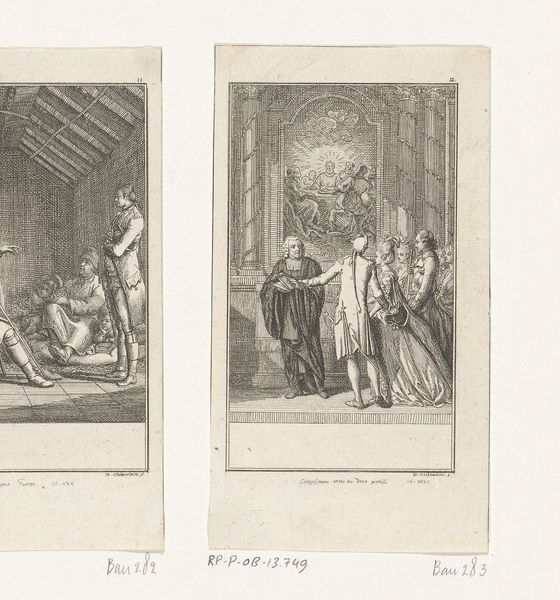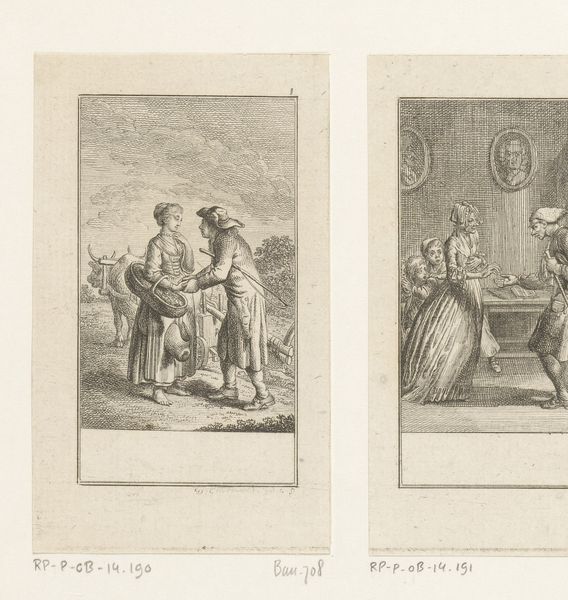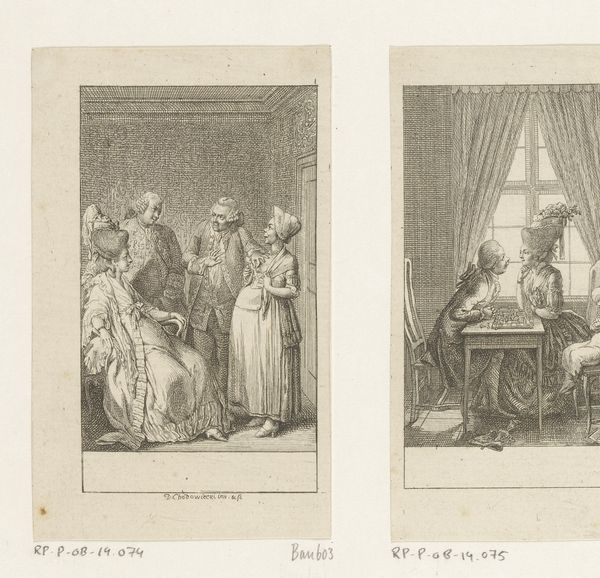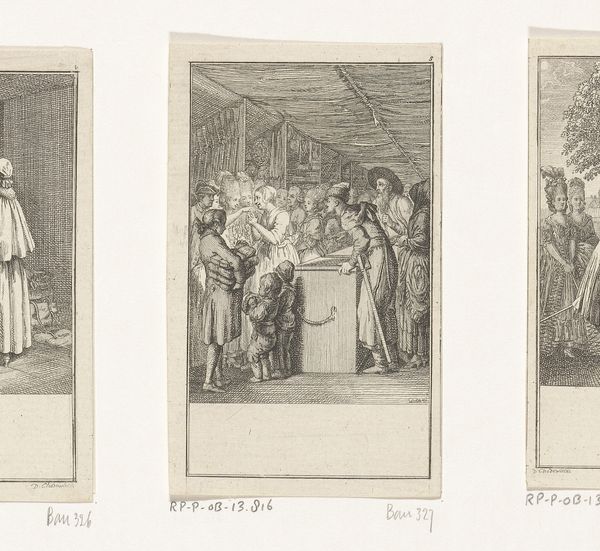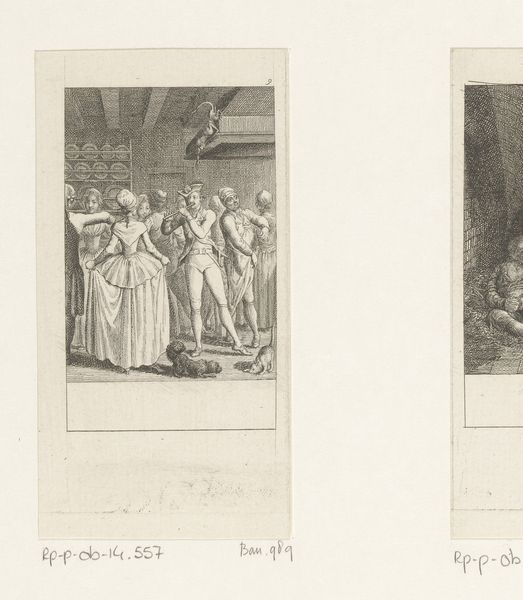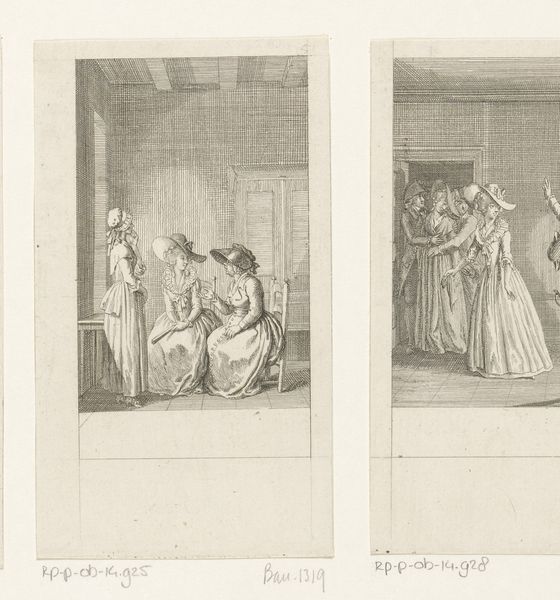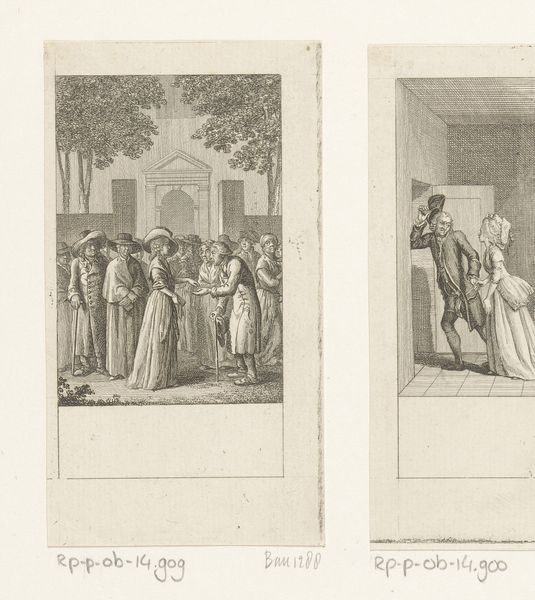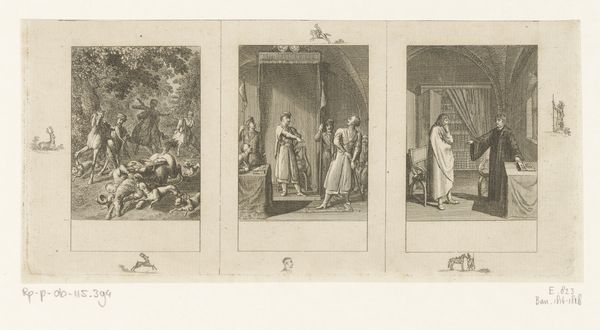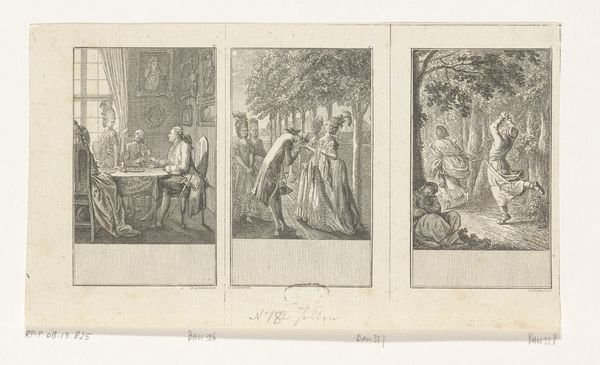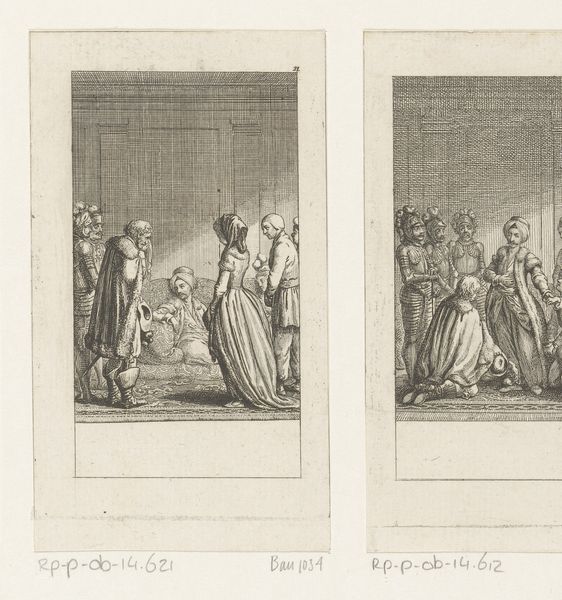
Twee voorstellingen uit de verhalen van Wilhelm Gottlieb Becker 1799
0:00
0:00
Dimensions: height 127 mm, width 174 mm
Copyright: Rijks Museum: Open Domain
Curator: Before us are "Twee voorstellingen uit de verhalen van Wilhelm Gottlieb Becker," two scenes etched by Daniel Nikolaus Chodowiecki in 1799. Editor: These vignettes are wonderfully delicate. I'm immediately struck by the textural differences—one, a rather stilted interior scene, contrasted with a more organically rendered outdoor gathering. It makes you wonder about the material differences present in each tableau. Curator: Indeed. Let's consider how Chodowiecki utilizes the engraving medium. Notice the precision of line, the deliberate hatching creating volume, the way light is handled in each. The narratives unfold through clear, almost theatrical gestures. The architecture acts almost as another performer within the interior tableau. Editor: Absolutely. Considering this as printmaking, what labor and processes enabled its creation? One sees the cross-hatching building up a darker tone inside, versus the single direction scoring done outdoors under the trees. I find myself thinking about who Wilhelm Gottlieb Becker was, what sort of machinery allowed Chodowiecki to create such clean engravings. I think this must've been a slow, arduous job for the artisans involved. How accessible were prints such as these for average 18th century consumers? Curator: The work feels distinctly Romantic in its preoccupation with storytelling and sentimental moments. One side captures a private interaction of apparent marital arrangements while the other side depicts a public agreement on either commerce, heritage, or legal rights between what appears to be a soon-to-bewedded couple with familial figures of patriarchal control. What meaning does it all suggest, framed as a German Expressionist style artwork produced in that period? Editor: I think German Expressionism wasn't exactly on the scene yet in the 1790s... These are two moments in social ceremony. However, observing the production process gives further understanding of how such stories came into existence. I'm quite captured by the trees framing this contract, its own structure built to bear witness, alongside those other folk with their bonnets! It tells us much about social witnessing in pre-modern economies. Curator: A compelling material reading that reveals much about social practice, yes. These prints encapsulate the 18th century in miniature—offering glimpses into the stories they chose to immortalize, or perhaps romanticize, to the wider world. Editor: Indeed, and in doing so, leave lingering questions on production value in tandem to story-telling; allowing us insights from their making along with social imaginaries of yesterday's lives through processes once required of skilled labor that have, over centuries, become somewhat archaic methods worth memorializing.
Comments
No comments
Be the first to comment and join the conversation on the ultimate creative platform.
